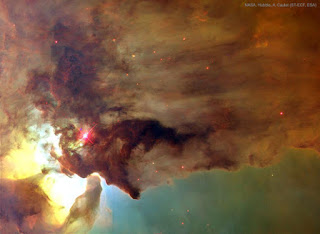Wednesday, May 31, 2017
Nerve Therapy Study Finds Potential Way to Reduce Drug Cravings - NEUROSCIENCE
A new preclinical study led by a University of Texas at Dallas researcher shows that vagus nerve stimulation (VNS) therapy might have the potential to help people overcome drug addiction by helping them learn new behaviors to replace those associated with seeking drugs.
The new research, published in the January issue of the journal Learning and Memory, found that drug cravings in addicted rats were reduced when they were treated with VNS. It’s possible that the research could be applied to people who have been addicted to drugs, said senior author Dr. Sven Kroener, assistant professor in the School of Behavioral and Brain Sciences.
“We are studying extinction learning and how vagus nerve stimulation can help subjects learn a new behavior that is opposed to an existing, maladaptive behavior like drug-taking,” Kroener said. “When a subject is addicted to a drug, extinction is a method to help them relearn behaviors — so they are able to take different actions.”
Vagus nerve stimulation involves sending a mild electric pulse through the vagus nerve, which is in the neck. VNS already has been approved by the U.S. Food and Drug Administration as a treatment for certain illnesses, such as depression and epilepsy.
UT Dallas is a major hub of VNS research, with studies currently being done on how the method can potentially help people recover from paralysis from stroke, post-traumatic stress disorder, anxiety or tinnitus.
Source:http://www.utdallas.edu/news/2017/1/24-32390_Nerve-Therapy-Study-Finds-Potential-Way-to-Reduce-_story-wide.html
Journal article/ paywall:http://learnmem.cshlp.org/content/24/1/35.full?sid=4d723e70-68fc-425a-8909-7d9cd33d1000
Corina Marinescu
NGC 6357: Stellar Wonderland - UNIVERSE
For reasons unknown, NGC 6357 is forming some of the most massive stars ever discovered. This complex wonderland of star formation consists of numerous filaments of dust and gas surrounding huge cavities of massive star clusters. The intricate patterns are caused by complex interactions between interstellar winds, radiation pressures, magnetic fields, and gravity.
The featured image includes not only visible light taken by the UKIRT Telescope in Hawaii (blue) as part of the SuperCosmos Sky Surveys, but infrared light from NASA's orbiting Spitzer Space Telescope (orange) and X-ray light from NASA's orbiting Chandra X-ray Observatory (pink). NGC 6357 spans about 100 light years and lies about 5,500 light years away toward the constellation of the Scorpion. Within 10 million years, the most massive stars currently seen in NGC 6357 will have exploded.
Image & info via APODhttps://apod.nasa.gov/apod/astropix.html
Image Credit: X-ray: NASA/CXC/PSU/L. Townsley et al; Optical: UKIRT; Infrared: NASA/JPL-Caltech
Tuesday, May 30, 2017
Toxic brain cells may drive many neurodegenerative disorders - NEUROSCIENCE
While most of us haven’t heard of astrocytes, these cells are four times as plentiful in the human brain as nerve cells. Now, a team led by researchers at the Stanford University School of Medicine has found that astrocytes, which perform many indispensable functions in the brain, can take on a villainous character, destroying nerve cells and likely driving many neurodegenerative diseases.
“We’ve learned astrocytes aren’t always the good guys,” said the study’s senior author, Ben Barres, MD, PhD, professor of neurobiology, of developmental biology and of neurology and neurological sciences. “An aberrant version of them turns up in suspicious abundance in all the wrong places in brain-tissue samples from patients with brain injuries and major neurological disorders from Alzheimer’s and Parkinson’s to multiple sclerosis. The implications for treating these diseases are profound.”
Journal article:http://www.nature.com/nature/journal/v541/n7638/full/nature21029.html
Source:http://med.stanford.edu/news/all-news/2017/01/toxic-brain-cells-may-drive-many-neurodegenerative-disorders.html
In the Center of the Lagoon Nebula - UNIVERSE
The center of the Lagoon Nebula is a whirlwind of spectacular star formation. Visible on the lower left, at least two long funnel-shaped clouds, each roughly half a light-year long, have been formed by extreme stellar winds and intense energetic starlight. The tremendously bright nearby star, Hershel 36, lights the area.
Vast walls of dust hide and redden other hot young stars. As energy from these stars pours into the cool dust and gas, large temperature differences in adjoining regions can be created generating shearing winds which may cause the funnels. This picture, spanning about 5 light years, was taken in 1995 by the orbiting Hubble Space Telescope. The Lagoon Nebula, also known as M8, lies about 5000 light years distant toward the constellation of Sagittarius.
Image & info via APODhttps://apod.nasa.gov/apod/astropix.html
Image Credit: Hubble, A. Caulet (ST-ECF, ESA), NASA
Monday, May 29, 2017
Subscribe to:
Comments (Atom)






















































